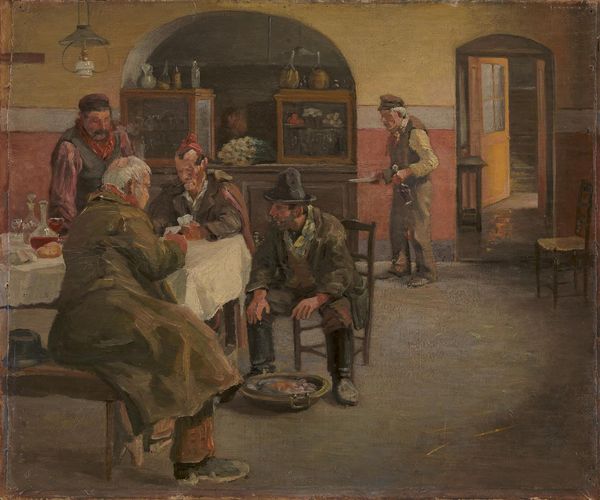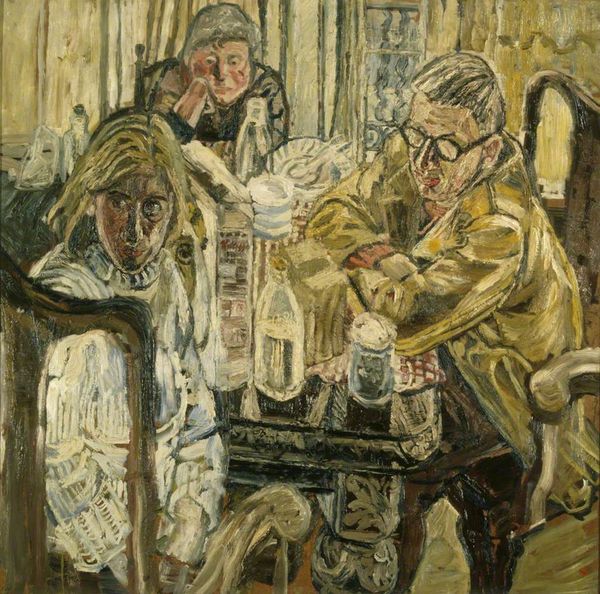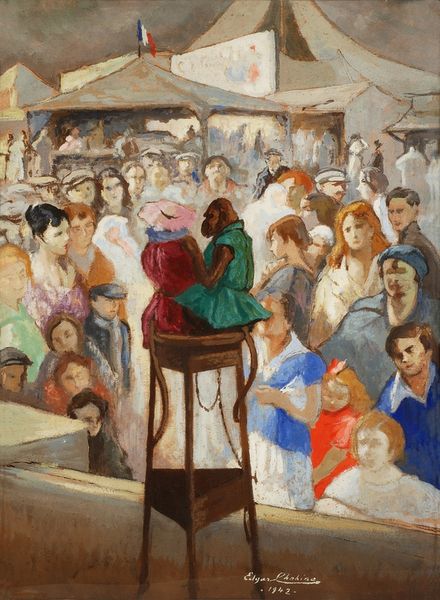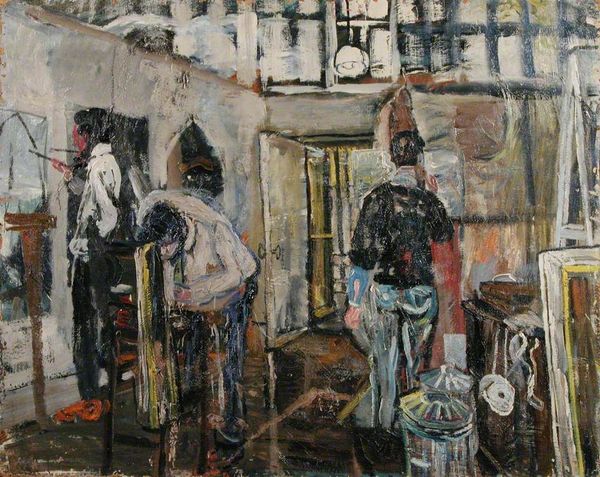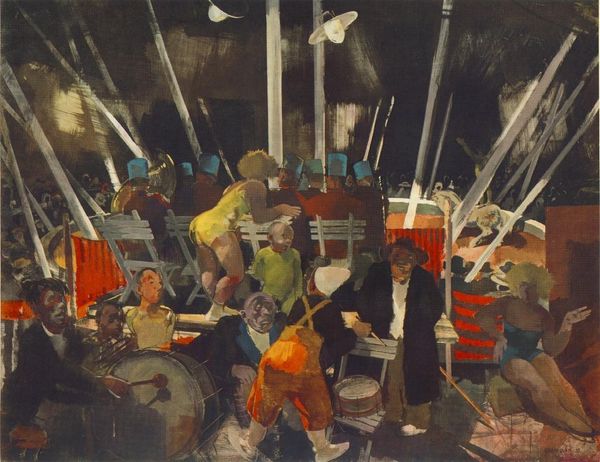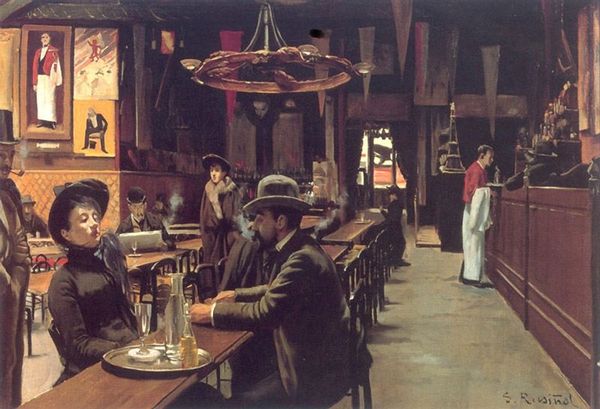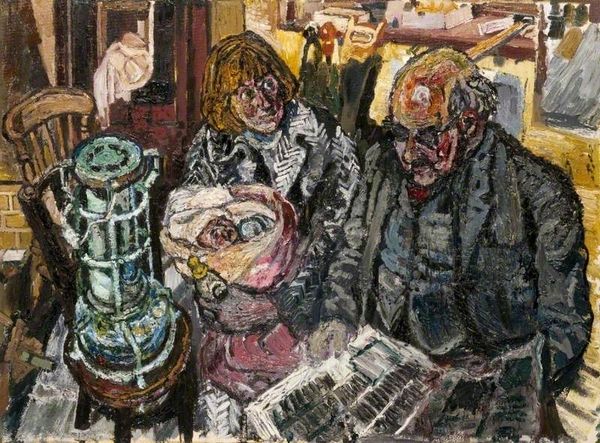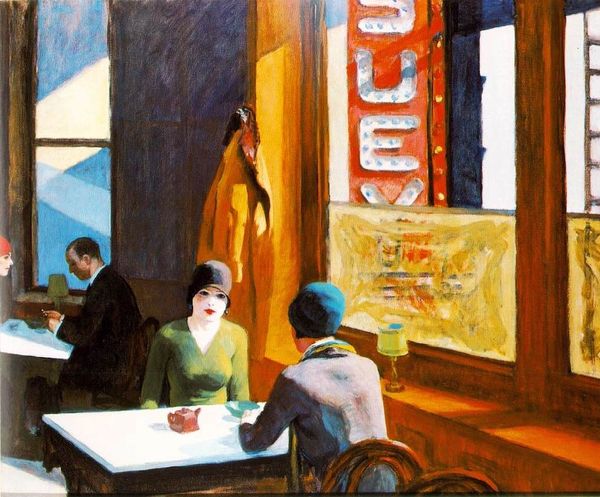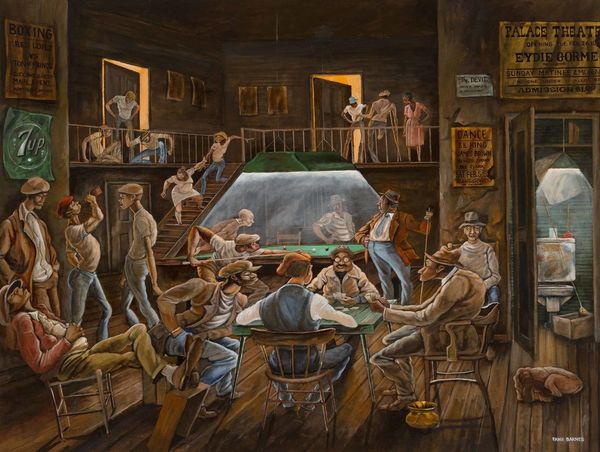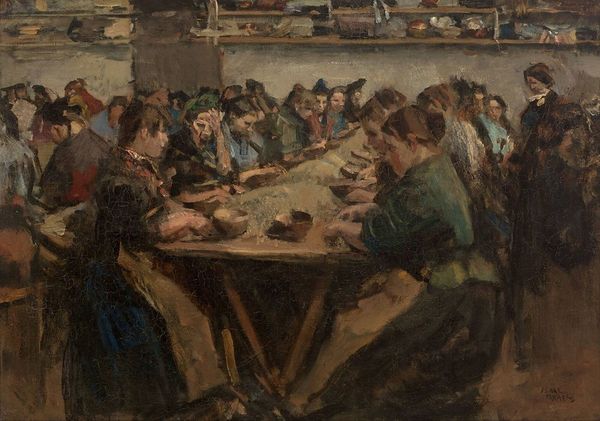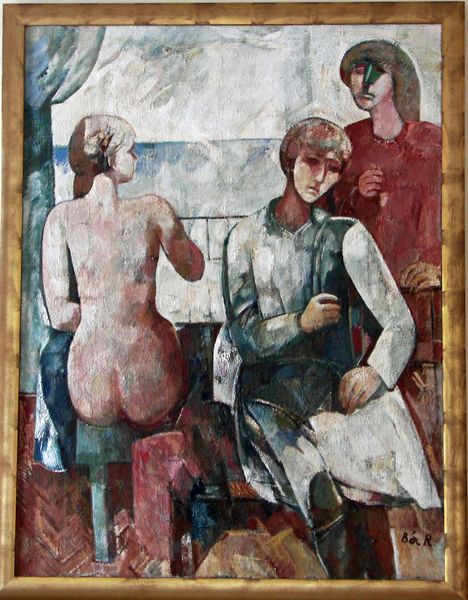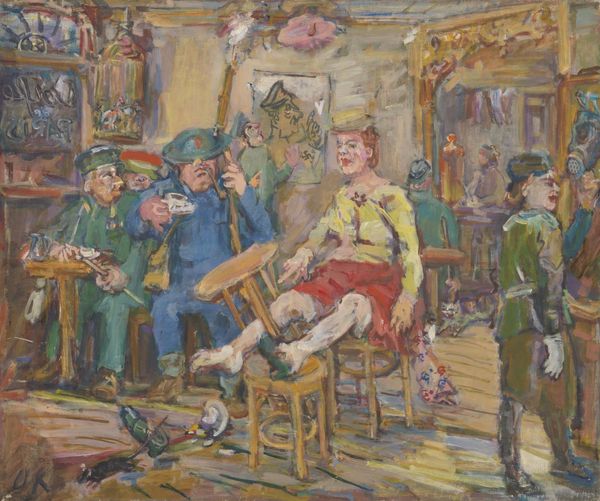
painting, oil-paint
#
portrait
#
urban landscape
#
painting
#
impressionism
#
street view
#
oil-paint
#
oil painting
#
cityscape
#
painting art
#
genre-painting
Copyright: Tsuguharu Foujita,Fair Use
Editor: So, we're looking at "Un bistrot à Saint-Germain-des-Prés," an oil painting by Tsuguharu Foujita. There's almost a grainy texture that’s particularly striking to me, a raw quality... How would you interpret this piece? Curator: Immediately, the process of its creation demands our attention. Observe how Foujita employs oil paint not for smooth illusionism, but to reveal a certain labor-intensive process. See how the grain you mention highlights the materiality of the paint itself. What kind of social reality might that technique represent? Editor: You mean, like, how the artist is showing us the "work" of art-making in the same way he's showing us people at work or leisure in the city? Curator: Precisely! Notice also the deliberate emphasis on everyday materials. The bottles on the shelves, the glasses, even the clothing - these aren't idealized objects, but the tangible products of industry and commerce. How do these specific choices relate to Foujita's own place as an artist operating within that economic system? Editor: So you're saying he’s not just painting a scene, but also commenting on the making and selling of things, including art itself? Curator: Exactly. Consider too, how Impressionism, known for fleeting light, shifts here. The painting uses it to show this kind of place as part of social practice rather than mere "snapshot" or rendering of bourgeois life. Now, if you consider that shift from an idealist view of representation towards more direct social commentary using urban labor, how can this connect this art and our appreciation of it to global exchanges of the time, of products of labour and raw materials? Editor: Wow, I never thought about Impressionism in terms of labor and global context like that. Curator: By examining the materials and methods of production, we gain a deeper understanding of its cultural significance and challenge the traditional boundaries of art and life. I guess this reminds us not just how the picture looks, but also how the artist might have seen a new type of connection and opportunity between the marketplace and the bohemian social gathering places. Editor: Thanks, it's really amazing how looking closely at the materials can open up a whole new way of seeing art!
Comments
No comments
Be the first to comment and join the conversation on the ultimate creative platform.
